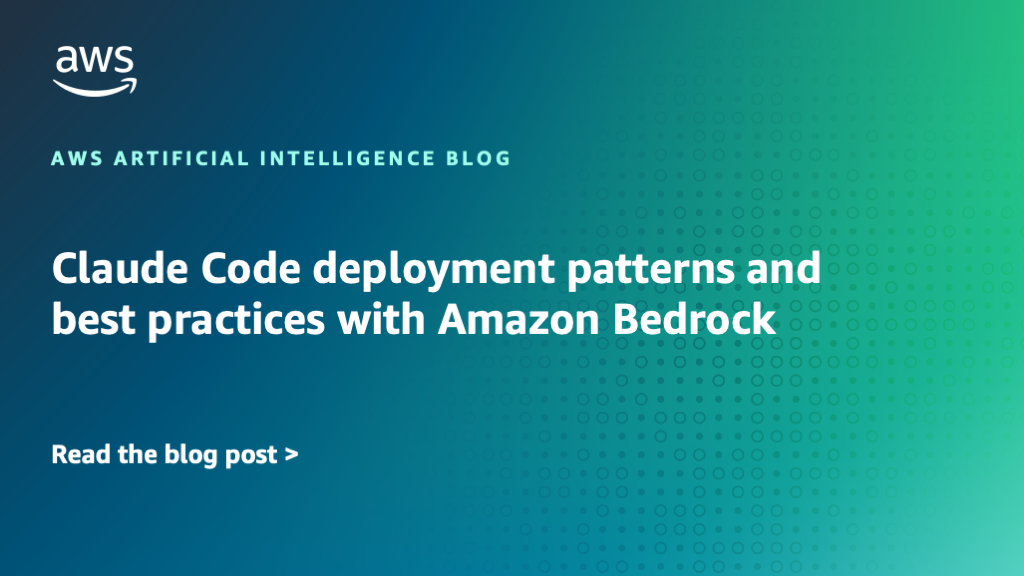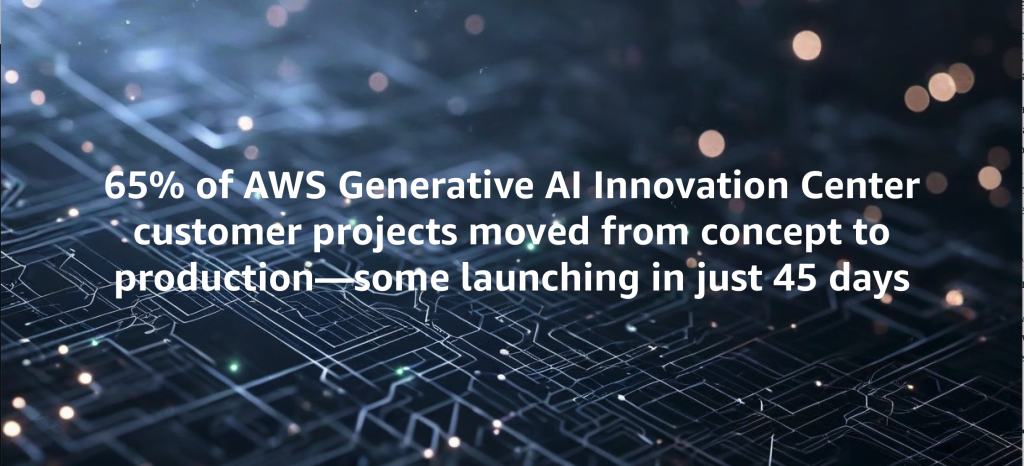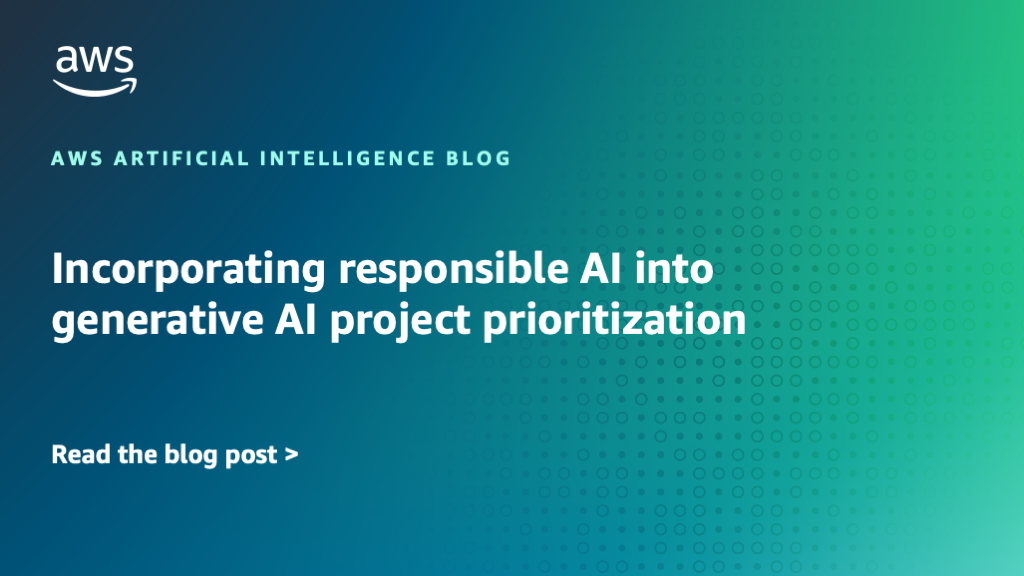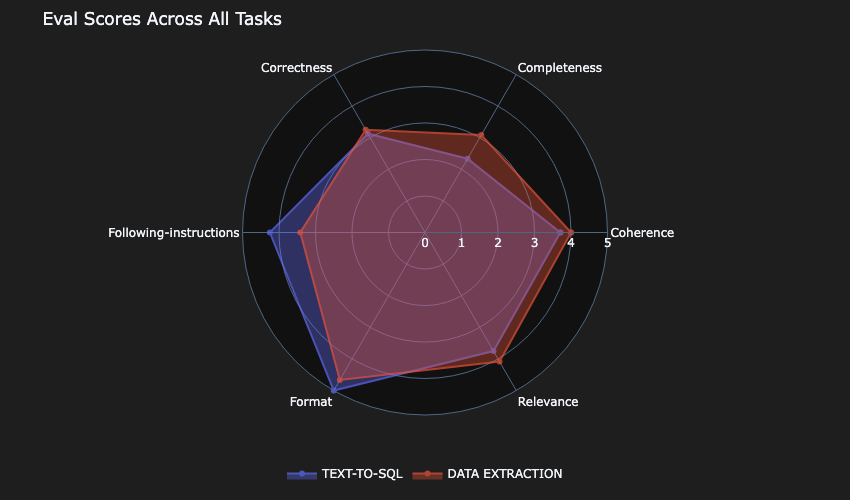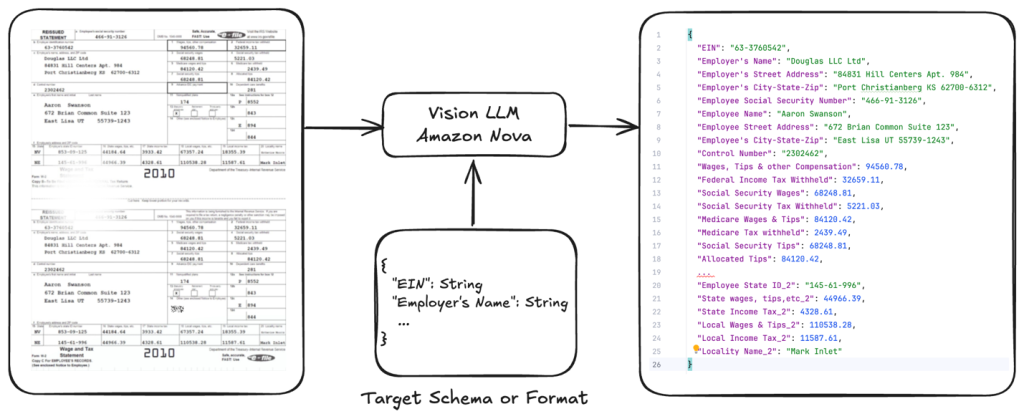Artificial Intelligence
Category: Best Practices
Building AI-Powered Voice Applications: Amazon Nova Sonic Telephony Integration Guide
Available through the Amazon Bedrock bidirectional streaming API, Amazon Nova Sonic can connect to your business data and external tools and can be integrated directly with telephony systems. This post will introduce sample implementations for the most common telephony scenarios.
Claude Code deployment patterns and best practices with Amazon Bedrock
In this post, we explore deployment patterns and best practices for Claude Code with Amazon Bedrock, covering authentication methods, infrastructure decisions, and monitoring strategies to help enterprises deploy securely at scale. We recommend using Direct IdP integration for authentication, a dedicated AWS account for infrastructure, and OpenTelemetry with CloudWatch dashboards for comprehensive monitoring to ensure secure access, capacity management, and visibility into costs and developer productivity .
Build an agentic solution with Amazon Nova, Snowflake, and LangGraph
In this post, we cover how you can use tools from Snowflake AI Data Cloud and Amazon Web Services (AWS) to build generative AI solutions that organizations can use to make data-driven decisions, increase operational efficiency, and ultimately gain a competitive edge.
Using Spectrum fine-tuning to improve FM training efficiency on Amazon SageMaker AI
In this post you will learn how to use Spectrum to optimize resource use and shorten training times without sacrificing quality, as well as how to implement Spectrum fine-tuning with Amazon SageMaker AI training jobs. We will also discuss the tradeoff between QLoRA and Spectrum fine-tuning, showing that while QLoRA is more resource efficient, Spectrum results in higher performance overall.
Multi-Agent collaboration patterns with Strands Agents and Amazon Nova
In this post, we explore four key collaboration patterns for multi-agent, multimodal AI systems – Agents as Tools, Swarms Agents, Agent Graphs, and Agent Workflows – and discuss when and how to apply each using the open-source AWS Strands Agents SDK with Amazon Nova models.
Responsible AI design in healthcare and life sciences
In this post, we explore the critical design considerations for building responsible AI systems in healthcare and life sciences, focusing on establishing governance mechanisms, transparency artifacts, and security measures that ensure safe and effective generative AI applications. The discussion covers essential policies for mitigating risks like confabulation and bias while promoting trust, accountability, and patient safety throughout the AI development lifecycle.
Beyond pilots: A proven framework for scaling AI to production
In this post, we explore the Five V’s Framework—a field-tested methodology that has helped 65% of AWS Generative AI Innovation Center customer projects successfully transition from concept to production, with some launching in just 45 days. The framework provides a structured approach through Value, Visualize, Validate, Verify, and Venture phases, shifting focus from “What can AI do?” to “What do we need AI to do?” while ensuring solutions deliver measurable business outcomes and sustainable operational excellence.
Incorporating responsible AI into generative AI project prioritization
In this post, we explore how companies can systematically incorporate responsible AI practices into their generative AI project prioritization methodology to better evaluate business value against costs while addressing novel risks like hallucination and regulatory compliance. The post demonstrates through a practical example how conducting upfront responsible AI risk assessments can significantly change project rankings by revealing substantial mitigation work that affects overall project complexity and timeline.
Beyond vibes: How to properly select the right LLM for the right task
In this post, we discuss an approach that can guide you to build comprehensive and empirically driven evaluations that can help you make better decisions when selecting the right model for your task.
Optimizing document AI and structured outputs by fine-tuning Amazon Nova Models and on-demand inference
This post provides a comprehensive hands-on guide to fine-tune Amazon Nova Lite for document processing tasks, with a focus on tax form data extraction. Using our open-source GitHub repository code sample, we demonstrate the complete workflow from data preparation to model deployment.

